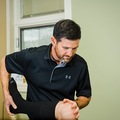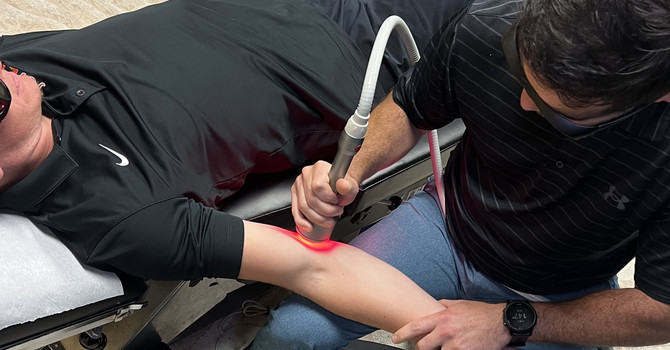
Disc injuries are a frequent cause of discomfort, affecting your ability to move, exercise, or enjoy everyday activities. At Shaw Spine & Sport, we believe in equipping you with the knowledge you need to make informed decisions about your health. Let’s explore what disc injuries are, the various types, and how evidence-based care can help you get back to living an active, pain-free life.
What Are Disc Injuries?
Imagine the discs in your spine as jelly-filled cushions between the vertebrae (bones of your spine). These discs act as shock absorbers, allowing you to bend, twist, and move with ease. When a disc becomes injured, it can impact how your spine functions and sometimes irritate nearby nerves, causing pain or other symptoms (Cramer et al., 2022).
Types of Disc Injuries
Herniated Disc
Think of squeezing a jelly donut too hard—some of the filling may leak out. In a herniated disc, the soft inner material pushes through the tough outer layer, potentially pressing on nearby nerves and causing pain, numbness, or tingling in the arms or legs, depending on where the herniation occurs (Benzel et al., 2020).
Degenerative Disc Disease
Over time, wear and tear can cause discs to lose hydration and flexibility, much like a sponge that dries out. This can reduce their shock-absorbing ability, leading to pain, stiffness, or reduced mobility (Brinjikji et al., 2022).
Annular Tears
Small tears in the outer layer of the disc (the annulus) can irritate nearby nerves, even without the inner material leaking out. These tears may cause localized discomfort or radiating pain (Rajasekaran et al., 2021).
What Are the Symptoms?
Disc injuries can vary in how they manifest based on the injury’s type and severity. Common symptoms include:
- Localized Pain: Pain in the neck, lower back, or mid-back.
- Radiating Pain: Pain that travels down your arms or legs when a nerve is irritated.
- Tingling or Numbness: A sign that nerve function may be temporarily affected.
- Weakness: Affected nerves may cause muscle weakness in certain areas (Benzel et al., 2020).
How We Treat Disc Injuries at Shaw Spine & Sport
At Shaw Spine & Sport, we take a holistic, evidence-based approach to treating disc injuries. Our goal is to reduce pain, restore function, and help you move confidently again.
- Personalized Chiropractic Care: Gentle, precise adjustments or mobilizations help improve spinal movement and relieve pressure on the affected discs and nerves (Cramer et al., 2022).
- Rehabilitation Exercises: Movement is a crucial part of the healing process! We create customized exercise programs to strengthen the muscles supporting your spine and improve both mobility and stability, helping you reduce pain and build resilience (Brinjikji et al., 2022).
- Soft Tissue Therapy: Disc injuries often affect surrounding muscles. We use techniques like instrument-assisted soft tissue mobilization (IASTM) and myofascial release to relieve muscle tension and promote better blood flow to the area.
- Education and Lifestyle Modifications: Understanding the root cause of your pain is key to long-term recovery. We’ll guide you through strategies such as ergonomic adjustments, improved posture, and healthy movement habits to maintain a healthy spine moving forward.
What Can You Do to Support Your Recovery?
Recovery from a disc injury is a process, and we’re here to guide you every step of the way. In addition to our treatments, here are a few things you can do to help speed up your recovery:
- Stay Active: Movement keeps your spine healthy. Start with low-impact activities like walking or swimming.
- Stay Hydrated: Proper hydration helps maintain the health of your discs.
- Eat Well: A balanced diet rich in anti-inflammatory foods supports your body’s healing process.
Let’s Get You Moving Again
Disc injuries don’t have to keep you from doing the things you love. At Shaw Spine & Sport, we’re passionate about helping you move better, feel stronger, and live pain-free.Ready to take the first step? Schedule your appointment today, and let’s develop a personalized plan tailored for you.





